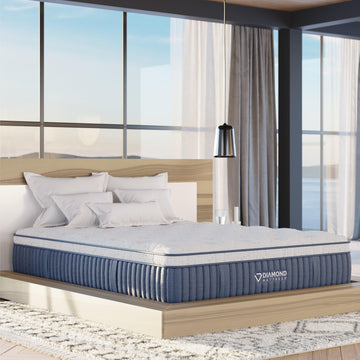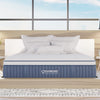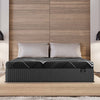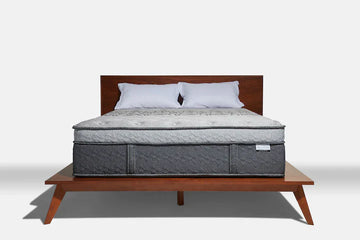For as long as springs or coils have been used in mattresses (around 150 years), you’d think there wouldn’t be many questions or any debate about these curved steel wires. But alas, there’s a plethora of information out there about mattress coils intended to convince you of the virtues of innerspring but unfortunately has also confused many people.
In this Mattress Facts blog, we’re going to help sort it all out and simplify the mattress coil quandary. Don’t worry, we’re not starting with a history lesson dating back to the late 1800s. We’ll boil it down to what you’ll find out there when mattress shopping – and more importantly, what you should look -- and feel -- for when you rest test a mattress.
It Takes Two, Baby!
A commonly used term is innerspring, which is a generic term that simply tells us that the mattress has a coil support system in it. There are a number of other terms and names for different types of coils, but there are basically just two that you need to understand based on the fundamental differences you will experience when lying on the mattress.
 1. Connected coils
1. Connected coils
These are coils that are connected to each other as one unit across the entire spring support system.
 2. Pocketed coils
2. Pocketed coils
These are individual coils encased in a fiber wrap that are stacked side by side or on top of each other and then attached only by the fiber encasement.
Go for a Rest Test
Some people are comfortable buying a mattress without trying it out – rest testing, as we say like to call it. However, the rest test is the best way to feel the difference between connected coils and pocketed coils.
Lie down, get into your favorite sleep position, change positions like you would during the night. If you have a sleep partner, you both should rest test together and shift your weight just as you would normally at home. This is going to reveal some of the key differences of the two basic coil types.
Motion isolation
Generally, pocketed coils are better than connected coils when it comes to isolating motion. In other words, movement or compression of the coils in one part of the mattress will not affect another part. Think of it as a vehicle with independent suspension that responds to different terrain. Eliminating motion transfer is important for sleep partners for undisturbed sleep.
 Conformity to the body
Conformity to the body
Within the category of pocket coils, mini- or micro-coils are designed to provide superior conformity or contouring to the body. While coil units are usually considered a support layer, some mattress makers use micro-coils for comfort layer for this very reason that they can conform to the individual’s body better than larger coils.
Pressure relief
Similar to the ability to conform to the body, pocketed coils can offer good pressure relief because each coil responds to body weight and shape independently from adjacent coils, allowing it to be more or less compressed as needed.
Because of the advantages of the pocketed coils for most types of sleepers, most mattresses these days are made with them, but that does not mean that connected coils are inferior or uncomfortable to sleep on. Bottom line, we recommend the rest test.

Nested Pocket Coils
The many terms related to innerspring mattresses reflects the innovations with this important component over the 150 years of its use in beds. Diamond Mattress has been a bedding manufacturer for nearly 90 years and no stranger to innovation.
In 2018, Diamond earned a patent on its nested, zoned pocket coil system that provides 25% more surface support for enhanced pressure relief. The coil zones provide optimum support and weight distribution under the shoulders and hips for proper spinal alignment, pain relief and overall sleep health.
A Word on Coil Count
There is a fairly big range in coil count depending on the type of mattresses and what your budget allows. Typically, a mattress can have between 300 and 1,000 coils, and some higher models with micro-coil units can have around 2,000. More important than coil count is how the coils are constructed so you might want to find out the thickness of the wire (called gauge), how tightly wound the coils are (called working turns) and its tempering (refers to the heating and cooling process that ensures durability). Just keep in mind that higher coil count doesn’t necessarily mean better support or comfort.








